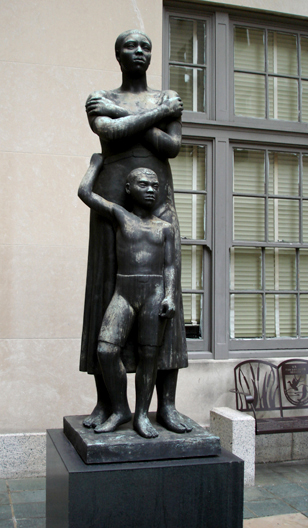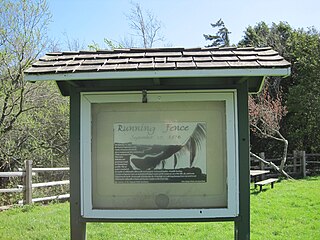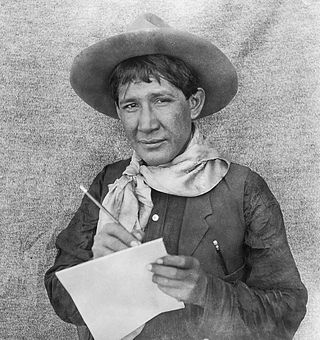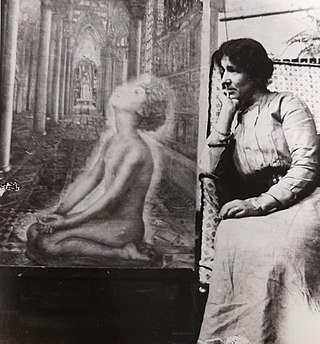Norman S. Chamberlain | |
|---|---|
| Born | 1887 Fennville, Michigan, U.S. |
| Died | 1961 Orange, California, U.S. |
| Occupation | Painter |

Norman S. Chamberlain (1887-1961) was an American painter. Two of his paintings are at the Smithsonian American Art Museum. [1]
Norman S. Chamberlain | |
|---|---|
| Born | 1887 Fennville, Michigan, U.S. |
| Died | 1961 Orange, California, U.S. |
| Occupation | Painter |

Norman S. Chamberlain (1887-1961) was an American painter. Two of his paintings are at the Smithsonian American Art Museum. [1]

The Smithsonian Institution, or simply the Smithsonian, is a group of museums, education and research centers, the largest such complex in the world, created by the U.S. government "for the increase and diffusion of knowledge." Founded on August 10, 1846, it operates as a trust instrumentality and is not formally a part of any of the three branches of the federal government. The institution is named after its founding donor, British scientist James Smithson. It was originally organized as the United States National Museum, but that name ceased to exist administratively in 1967.

Smithsonian is a science and nature magazine, and is the official journal published by the Smithsonian Institution in Washington, D.C., although editorially independent from its parent organization. The first issue was published in 1970. The Smithsonian holds events such as the American Ingenuity Awards, Future Con, and Museum Day.
The Federal Art Project (1935–1943) was a New Deal program to fund the visual arts in the United States. Under national director Holger Cahill, it was one of five Federal Project Number One projects sponsored by the Works Progress Administration (WPA), and the largest of the New Deal art projects. It was created not as a cultural activity, but as a relief measure to employ artists and artisans to create murals, easel paintings, sculpture, graphic art, posters, photography, theatre scenic design, and arts and crafts. The WPA Federal Art Project established more than 100 community art centers throughout the country, researched and documented American design, commissioned a significant body of public art without restriction to content or subject matter, and sustained some 10,000 artists and craft workers during the Great Depression. According to American Heritage, “Something like 400,000 easel paintings, murals, prints, posters, and renderings were produced by WPA artists during the eight years of the project’s existence, virtually free of government pressure to control subject matter, interpretation, or style.”

The Smithsonian American Art Museum is a museum in Washington, D.C., part of the Smithsonian Institution. Together with its branch museum, the Renwick Gallery, SAAM holds one of the world's largest and most inclusive collections of art, from the colonial period to the present, made in the United States. More than 7,000 artists are represented in the museum's collection. Most exhibitions are held in the museum's main building, the Old Patent Office Building, while craft-focused exhibitions are shown in the Renwick Gallery.

The Public Works of Art Project (PWAP) was a New Deal work-relief program that employed professional artists to create sculptures, paintings, crafts and design for public buildings and parks during the Great Depression in the United States. The program operated from December 8, 1933, to May 20, 1934, administered by Edward Bruce under the United States Treasury Department, with funding from the Federal Emergency Relief Administration.

The Renwick Gallery is a branch of the Smithsonian American Art Museum located in Washington, D.C. that displays American craft and decorative arts from the 19th to 21st century. The gallery is housed in a National Historic Landmark building that was opened in 1859 on Pennsylvania Avenue and originally housed the Corcoran Gallery of Art. When it was built in 1859, it was called "the American Louvre", and is now named for its architect James Renwick Jr.

Harvey Thomas Dunn NA, also known as J. Harvey Dunn, was an American painter and teacher. During World War I, Dunn was an artist-correspondent with the American Expeditionary Forces in Europe. Most of Dunn's war sketches are housed at the Smithsonian Institution in the National Museum of American History in Washington, D.C. He is best known for his prairie-intimate masterpiece, The Prairie is My Garden (1950). In this painting, a mother and her two children are out gathering flowers from the quintessential prairie of the Great Plains.
Salvatore Scarpitta was an American artist best known for his sculptural studies of motion.

Norman Wilfred Lewis was an American painter, scholar, and teacher. Lewis, who was African-American and of Bermudian descent, was associated with abstract expressionism, and used representational strategies to focus on black urban life and his community's struggles.

Running Fence was an installation art piece by Christo and Jeanne-Claude, which was completed on September 10, 1976. The art installation was first conceived in 1972, but the actual project took more than four years to plan and build. After it was installed, the builders removed it 14 days later, leaving no visible trace behind.
The Smithsonian Asian Pacific American Center (APAC) is a migratory museum that shares Asian Pacific American history, art, and culture through innovative museum experiences online and throughout the U.S through the Smithsonian Institution's work. The center was established in 1997 and does not feature a museum building for public display; instead, the institution manifests its work through community engagement.
Elwyn Moody "Wynn" Chamberlain,, was an American artist, film maker and author. Described by The New York Times as a "pioneer realist painter", Chamberlain has two works, Interior: Late August (1955) and The Barricade (1958), in the permanent collection of the Smithsonian American Art Museum.

Save Outdoor Sculpture! (SOS!) was a community-based effort to identify, document, and conserve outdoor sculpture in the United States. The program was initiated in 1989 and ended in 1999.

Earnest Spybuck was an Absentee Shawnee Native American artist, who was born on the land allotted the Shawnee Indians in Indian Territory and what was to later become Pottawatomie County, Oklahoma, near the town of Tecumseh. M. R. Harrington, an archaeologist/anthropologist, was touring the area documenting Native Americans, their history, culture and living habits. Interested in the religious ceremonies of the Shawnee which included the use of peyote, Harrington had ventured to the Shawnee Tribal lands. There he learned of Earnest Spybuck's artistic work and encouraged Spybuck in his endeavors. While Spybuck's work was obviously art, Harrington saw that he was illustrating detailed scenes of ceremonies, games, and social gatherings which could be used to illustrate many anthropological publications. Spybuck's work was received positively by both Native American and non-native artistic communities. Many of his works are now held by the Smithsonian's National Museum of the American Indian.
Cynthia Schira is an American textile artist and former university professor. Her work is represented in the collections of many major public museums.

Da Loria Norman (1872–1935) was an American artist. Norman was noted for painting and for her illumination of books and images, and partnered with leading English artists such as Walter Crane. One of her most significant commissions was the illumination of "Ecclesiastes and the Song of Solomon", a Ballantyne Press vellum edition designed by Charles Ricketts, for the Spencer Bequest of the New York Public Library. Norman's work is held in the Smithsonian American Art Museum, among other collections.
Toshio Odate is a Japanese-born American sculptor, woodworker, craftsman, author, and educator. He specializes in Japanese woodworking and is a noted shoji maker. He is the author of, Japanese Woodworking Tools: Their Tradition, Spirit and Use.
David Ross Novros, is an American artist. He is known for his minimalist geometric paintings, shaped canvases, and his use of color. He has also studied fresco painting extensively.